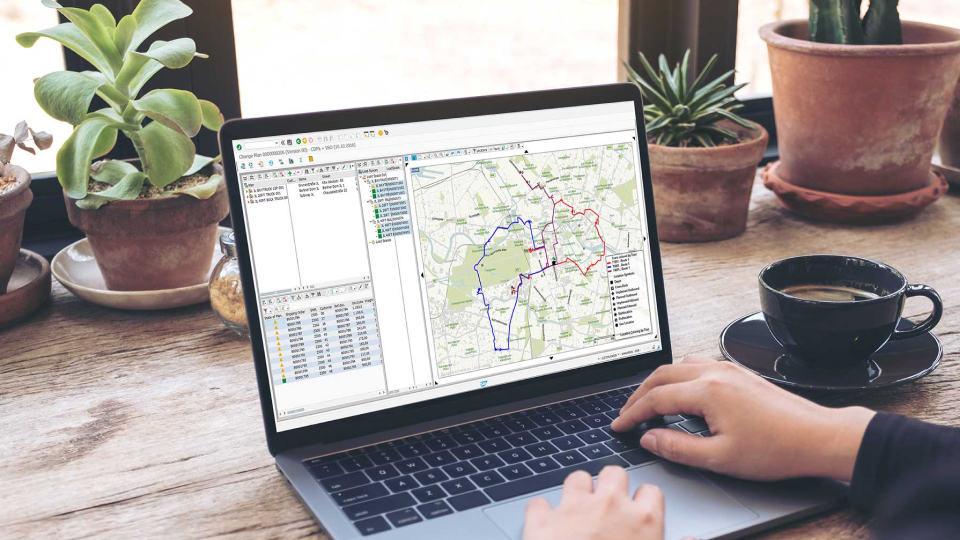
How a Ride Hailing Software Helps You Manage Peak-Hour Demand?
Managing peak-hour demand is one of the toughest challenges in the ride-hailing industry. During rush hours—typically 7:00–9:00 AM and 5:00–7:00 PM—ride requests surge dramatically, leading to longer wait times, increased rider cancellations, and driver unavailability. These inefficiencies don’t just frustrate customers; they also reduce revenue and operational efficiency for service providers. According to a 2023 report by Statista, over 43% of ride-hailing app users in urban areas have experienced excessive wait times or cancellations during peak hours, with nearly 1 in 4 users reporting that they switched to a competitor due to poor peak-time service. That’s where intelligent ride hailing software comes into play.

With real-time tracking, predictive analytics, and automated dispatching, modern platforms help balance demand and supply dynamically—ensuring better rider experiences and maximized fleet productivity during high-stress periods.
What is a Ride-hailing System?
Ride sharing software is a digital platform—typically a mobile or web-based application—that allows users to book on-demand transportation services from nearby drivers. Unlike traditional taxis, ride hailing software uses real-time location tracking, automated dispatch, and dynamic pricing to match passengers with drivers efficiently.
These systems consist of three main components:
1. Customer App – for booking rides, tracking vehicles, and making payments.
2. Driver App – for receiving trip requests, navigating to pickup/drop-off points, and managing earnings.
3. Admin Panel/Backend System – for managing bookings, drivers, payments, pricing, and analytics.

This software helps streamline operations, reduce idle time, improve customer satisfaction, and offer data-driven insights into ride patterns, revenue, and performance.
Key Features of Ride Hailing Platform
1. Real-Time Driver Allocation
Real-time driver allocation is the core engine that powers a smooth ride-hailing experience—especially during peak hours when demand can spike unpredictably. Instead of manually assigning drivers or relying on static zones, modern ride-hailing software uses GPS tracking and intelligent algorithms to automatically match riders with the nearest available driver in real time.
This instant matching is made possible through a combination of location data, driver availability, traffic conditions, and estimated time to pickup. The system continuously monitors both rider and driver positions, ensuring that the assignment minimizes wait time and maximizes fleet efficiency.
During high-demand periods, such as rush hour or after major events, the system dynamically adjusts and re-prioritizes assignments to ensure quicker turnarounds. For example, if a driver finishes a trip in a high-demand zone, the software can queue up the next nearest ride request—keeping the driver active and reducing idle time.
Additionally, intelligent routing helps avoid congestion and reroute drivers as traffic conditions change, which is especially critical in urban areas.
Key Benefits
A. Faster pickup times for riders
B. Less downtime and more earnings for drivers
C. Increased ride completion rate for operators
D. Improved customer satisfaction during peak congestion

When optimized correctly, real-time driver allocation acts as the backbone of operational efficiency and ensures your platform can handle peak load without service breakdowns.
2. Surge Pricing Optimization
Surge pricing optimization is a crucial feature in any advanced ride-hailing system, especially during peak-hour demand. It refers to the automated adjustment of fare prices based on real-time supply and demand dynamics. When a rider requests outnumber available drivers in a particular area, the system triggers a price increase—commonly known as a “surge”—to balance the equation.
This dynamic pricing model serves two important purposes:
1. Incentivizing Drivers – Higher fares encourage more drivers to move toward high-demand areas or log in during peak periods, improving availability.
2. Regulating Demand – Slightly elevated prices can deter non-urgent requests, helping ensure rides are prioritized for those who truly need them.
The ride hailing software continuously monitors factors like:
a. Rider-to-driver ratio in a specific zone
b. Time of day and historical demand patterns
c. Traffic congestion and weather conditions
d. Ongoing events (concerts, festivals, holidays)
When predefined thresholds are met, the system automatically activates surge pricing in that area. The increase is typically shown to both riders (before booking) and drivers (as part of their potential earnings), maintaining transparency and motivation across the board.
Benefits of Surge Pricing Optimization
a. Maintains service availability when demand is high
b. Prevents rider churn due to excessive wait times
c. Boosts driver participation and revenue
d. Helps the system self-correct without manual intervention

By automating this process, ride-hailing businesses can avoid chaotic dispatches and ensure a balanced, responsive pricing strategy—especially critical for handling peak-hour traffic and special event surges.
3. Demand Forecasting & Route Planning
Demand forecasting and route planning are powerful capabilities in ride-hailing software that help platforms proactively manage rider demand, especially during peak hours. Rather than reacting to surges in real time, forecasting tools use historical data, traffic trends, weather, and event schedules to predict when and where demand will spike—allowing businesses to prepare in advance.
Demand Forecasting
By analyzing ride patterns over time, the software identifies high-demand zones and time blocks—like central business districts during office hours or stadium areas before and after events. These insights enable operators to:
a. Pre-deploy drivers to predicted hotspots
b. Offer incentives or bonuses to drivers in advance
c. Send push notifications encouraging driver availability before spikes
Some platforms even integrate with external data sources (e.g., Google Events, weather APIs) to anticipate disruptions or crowd-pullers that may increase trip requests in specific areas.
Route Planning
Once a trip is assigned, the system calculates optimal driving routes using real-time traffic and road condition data. Route optimization ensures:
a. Shorter ETA for pickups and drop-offs
b. Fewer delays due to traffic congestion
c. Reduced fuel costs and improved driver earnings
Advanced ride-hailing systems also use predictive routing—where the platform suggests preferred waiting zones for idle drivers based on likely upcoming ride requests. This helps reduce unproductive driving and keeps the fleet distributed efficiently.
Benefits of Demand Forecasting & Route Planning
a. Prevents driver shortages by positioning vehicles proactively
b. Reduces passenger wait times and cancellations
c. Enhances operational efficiency through smarter routing
d. Supports better driver earnings and satisfaction
e. Improves the platform’s ability to handle fluctuating demand without downtime

Together, these features help ride-hailing businesses not just respond to demand—but anticipate and capitalize on it.
4. Driver Incentive Management
Driver incentive management is a critical feature in ride sharing platforms that helps ensure consistent driver availability—especially during high-demand periods like peak hours, weekends, or major public events. By automating how bonuses, rewards, and performance-based payouts are handled, this feature keeps the driver network motivated, responsive and well-distributed across demand hotspots.
Why Incentives Matter
During peak hours, rider requests can outpace the supply of available drivers. If too few drivers are active, it leads to longer wait times, ride cancellations, and poor customer experience. Strategic incentives—such as surge bonuses, trip-based rewards, or zone-specific payouts—encourage more drivers to stay online, head toward high-demand areas, or complete additional rides.
How Ride-Hailing Software Automates Incentives
Modern ride hailing platforms use built-in rules and AI-driven triggers to manage incentive distribution:
a. Zone-Based Bonuses: Drivers entering or completing rides in designated high-demand zones during specific time windows are automatically rewarded.
b. Ride Completion Targets: Drivers who complete a set number of rides within a timeframe (e.g., 10 rides between 5–8 PM) receive a performance bonus.
c. Streak or Peak-Time Bonuses: Additional payouts for accepting and completing consecutive rides during rush hours.
These incentive rules are managed from the admin dashboard, allowing operators to customize them based on city, fleet size, day of the week, or seasonal trends.
In-App Driver Engagement
Drivers are notified in real-time via the ride hailing application about:
a. Active bonus zones on the map
b. Remaining rides to complete an incentive target
c. Special promotions like weekend challenges or referral bonuses
This gamification of incentives boosts engagement and keeps drivers focused on meeting targets during key periods.

Benefits of Automated Driver Incentives
a. Improves driver availability when demand spikes
b. Encourages drivers to accept more rides and reduce cancellations
c. Balances fleet distribution across low- and high-demand zones
d. Increases platform loyalty and reduces driver churn
With smart driver incentive management, ride-hailing operators can move from reactive firefighting to proactive workforce planning—keeping service levels high when it matters most.
5. Enhanced Rider Communication
Enhanced rider communication plays a vital role in improving the overall user experience during peak hours. When wait times are longer and demand is high, clear, timely, and transparent communication can make the difference between a satisfied rider and a lost customer.
Ride hailing software uses a mix of real-time notifications, ETA tracking, and status updates to keep riders informed at every step of their journey. This not only helps manage expectations but also builds trust in the reliability of the platform.
Some of the key communication features include :
Real-Time ETA and Tracking
a. Riders can view the driver’s live location, estimated time of arrival (ETA), and route in real-time.
b. This reduces anxiety during delays and gives users confidence that their ride is on the way.
Live Status Updates
a. Automated updates inform users when the ride is accepted, when the driver is nearby when the trip starts, and when it ends.
b.These updates are delivered via push notifications, SMS, or in-app messages depending on user preferences.
Transparent Surge Pricing Alerts
a. During peak demand, the app clearly displays when surge pricing is in effect.
b. Users are shown the updated fare upfront, with a note explaining the price increase due to high demand.

Driver & Vehicle Information
a. Riders receive details about the driver (name, photo, rating) and vehicle (make, model, license plate).
b. This enhances safety and helps riders feel more prepared for the pickup.
Two-Way Communication
a. In-app chat and call features allow riders and drivers to coordinate on pickup location, delays, or special instructions.
b. Some platforms also include translation tools for multilingual regions.
Proactive Issue Resolution
a. If a ride is delayed or canceled, the system can automatically suggest alternative options or offer discount vouchers for inconvenience.
b. Chatbots or AI assistants may also be used to handle basic queries instantly.
Benefits of Enhanced Rider Communication
a. Reduces ride cancellations caused by confusion or uncertainty
b. Boosts rider satisfaction and repeat usage
c. Builds transparency and trust during unpredictable peak periods
d. Enables faster resolution of complaints or ride issues
By keeping these riders informed, engaged, and reassured throughout the experience, ride sharing software helps minimize frustration and turn peak-hour challenges into opportunities for loyalty and growth.
Keep Peak-Hour Chaos Under Control with Smart Ride-Hailing Software
Managing peak-hour demand doesn’t have to be chaotic. With the right ride sharing software, operators can turn traffic spikes into growth opportunities. Features like real-time driver allocation, dynamic surge pricing, demand forecasting, driver incentives, and enhanced rider communication work together to create a seamless experience for both riders and drivers.
More importantly, the admin dashboard ties everything together—giving you live insights and full control to make timely, informed decisions. If your current system struggles during high-demand periods, it may be time for an upgrade.
Ready to see how advanced ride hailing software can transform your peak-hour performance?





